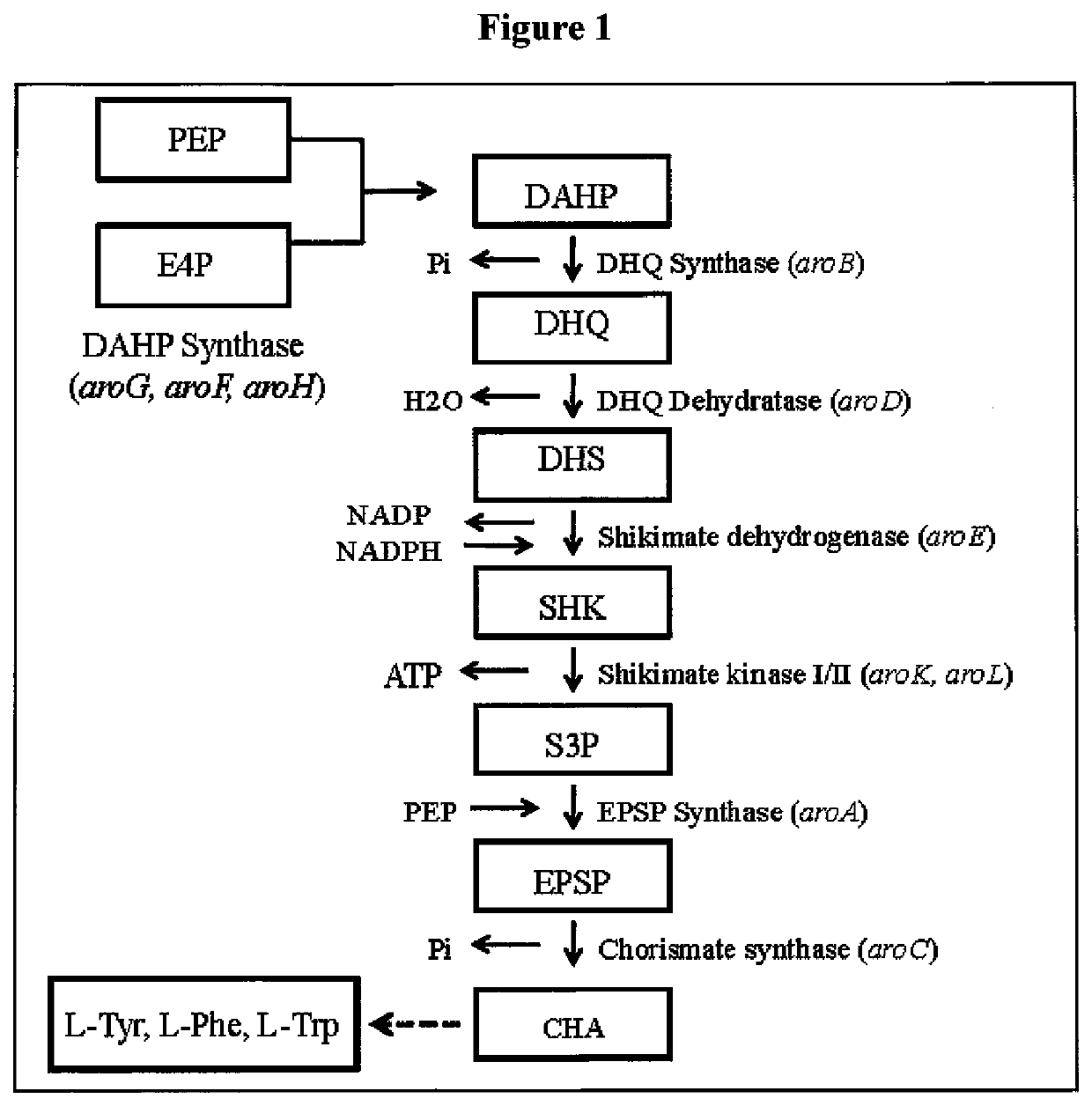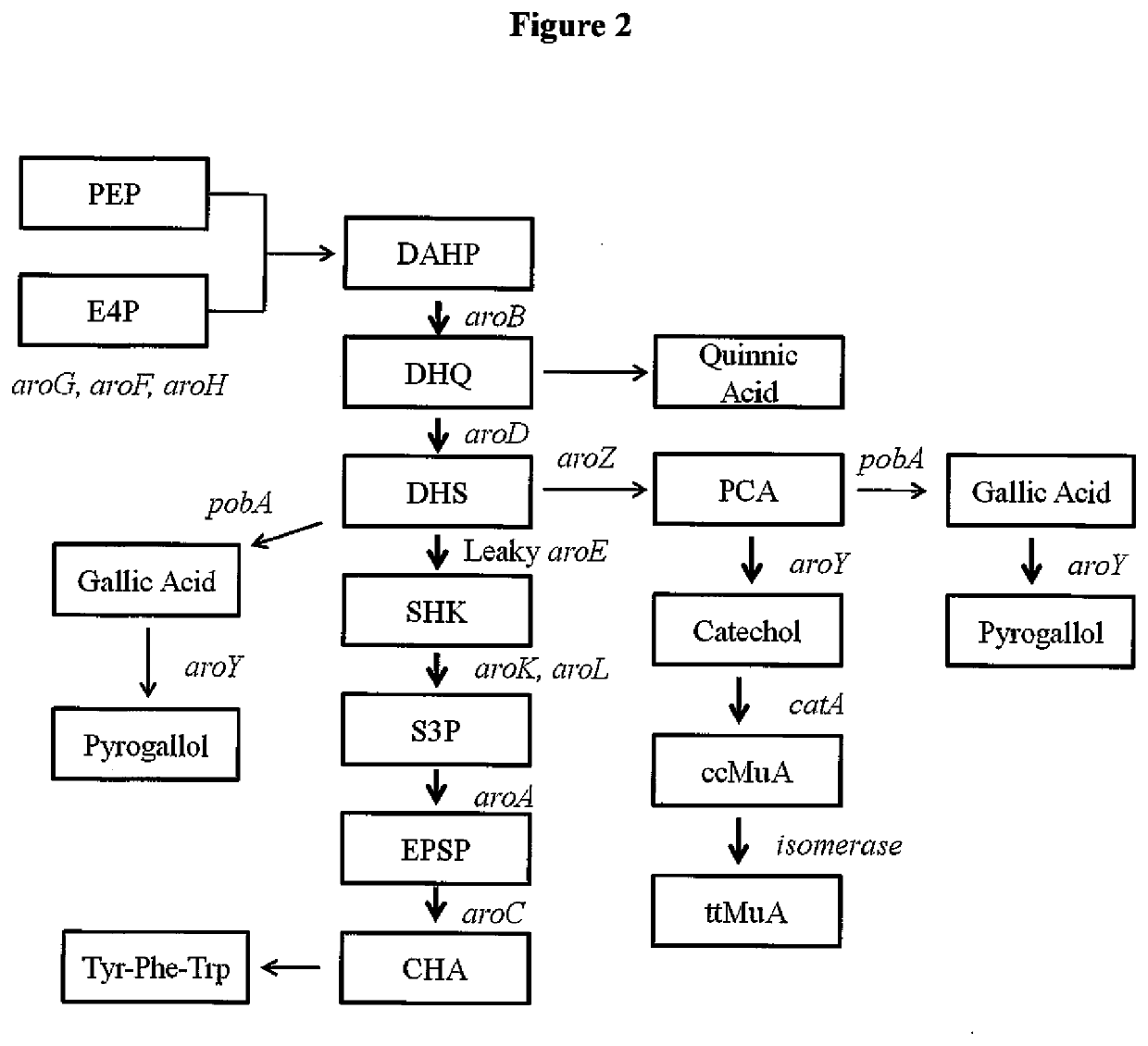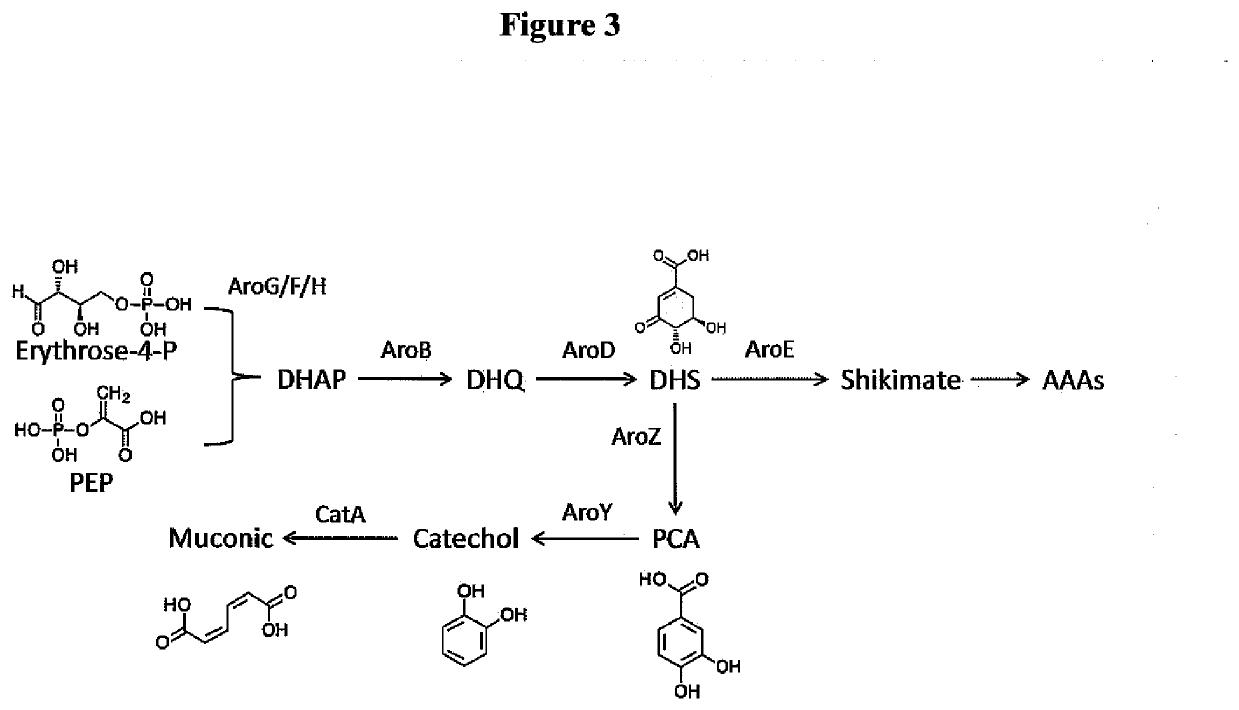Improved muconic acid production from genetically engineered microorganisms
a technology of genetic engineering and genetic engineering, applied in the direction of lysine, transferase, ligase, etc., can solve the problems of environmental damage to current synthesis of adipic acid, poor synthesis effect of adipic acid, and high cost of medium components (aromatic amino acids and vitamins), so as to enhance the activity of one or more enzymes involved in the central aromatic biosynthetic pathway within the microbial cell, and enhance the activity of one or
- Summary
- Abstract
- Description
- Claims
- Application Information
AI Technical Summary
Benefits of technology
Problems solved by technology
Method used
Image
Examples
example 1
Increasing Expression of aroG and aroF Genes
[0100]The tyrR gene of E. coli can be mutated by any one of a number of well-known methods, such as chemical or radiation mutagenesis and screening (for example by PCR and DNA sequencing) or selection for analog resistance (for example, resistance to 4-fluorotyrosine), transposon mutagenesis, bacteriophage Mu mutagenesis, or transformation. In a preferred embodiment, the mutation in tyrR gene is a null mutation (a mutation that leaves no detectable activity), and in a more preferable embodiment, at least a portion of the tyrR gene is deleted. This can be accomplished, for example, by using a two-step transformation method using linear DNA molecules (Jantama et al, 2008a; Jantama et al, 2008b). In the first step, a camR, sacB cassette is integrated at the tyrR locus to replace most or all of tyrR open reading frame by double recombination and selecting for chloramphenicol resistance. In the second step, a linear DNA comprising a deleted ver...
example 2
Feedback Resistant AroG and AroF
[0102]Mutations in the aroG gene that lead to a feedback resistant AroG enzyme (3-deoxy-D-arabinoheptulosonate-7-phosphate synthase or DAHPS) are well known in the art (Shumilin et al, 1999; Kikuchi et al, 1997; Shumilin et al, 2002). Also well known are methods for creating, identifying, and characterizing such mutations (Ger et at, 1994, Hu et al., 2003). A preferable mutation is one that leads to complete resistance to inhibition by phenylalanine. Any of the known published feedback resistant mutations can be introduced into an aroG gene contained in the chromosome or on a plasmid by any of a number of well known methods, one example of which is mutagenic PCR in which the desired mutation is synthesized as part of a PCR priming oligonucleotide (Hu et al., 2003). Correct installation of the mutation is confirmed by DNA sequencing. The sequence of the wild type aroG gene from E. coil C is given in SEQ ID No. 18. A preferred mutation is a point mutati...
example 3
Deletion of aroE from Chromosomal DNA and Muconic Acid Production
[0109]In this example the effect of overexpression of aroB and aroG on multicopy plasmids as well as the expression of genes coding for proteins functional in the muconic acid pathway was investigated. Strain MYR34 containing a deletion in the aroE gene coding for shikimate dehydrogenase was used as parent strain in these studies. The deletion of chromosomal copy of aroE was accomplished in a fashion similar to that described above in Example 1. When MYR34 was transformed with the plasmid pCP32AMP overexpressing the aroG gene coding for DAHP synthase protein functional in the shikimic acid pathway, there was a significant increase in the accumulation of DHS. When MYR34 was transformed with the plasmid expressing aroB from a constitutive promoter, no significant increase in the accumulation of DHS was noticed. However, when the E. coli strain MYR34 was transformed with the plasmid expressing both aroB and aroG genes, th...
PUM
| Property | Measurement | Unit |
|---|---|---|
| Fraction | aaaaa | aaaaa |
| Time | aaaaa | aaaaa |
| Density | aaaaa | aaaaa |
Abstract
Description
Claims
Application Information
 Login to View More
Login to View More - R&D
- Intellectual Property
- Life Sciences
- Materials
- Tech Scout
- Unparalleled Data Quality
- Higher Quality Content
- 60% Fewer Hallucinations
Browse by: Latest US Patents, China's latest patents, Technical Efficacy Thesaurus, Application Domain, Technology Topic, Popular Technical Reports.
© 2025 PatSnap. All rights reserved.Legal|Privacy policy|Modern Slavery Act Transparency Statement|Sitemap|About US| Contact US: help@patsnap.com



